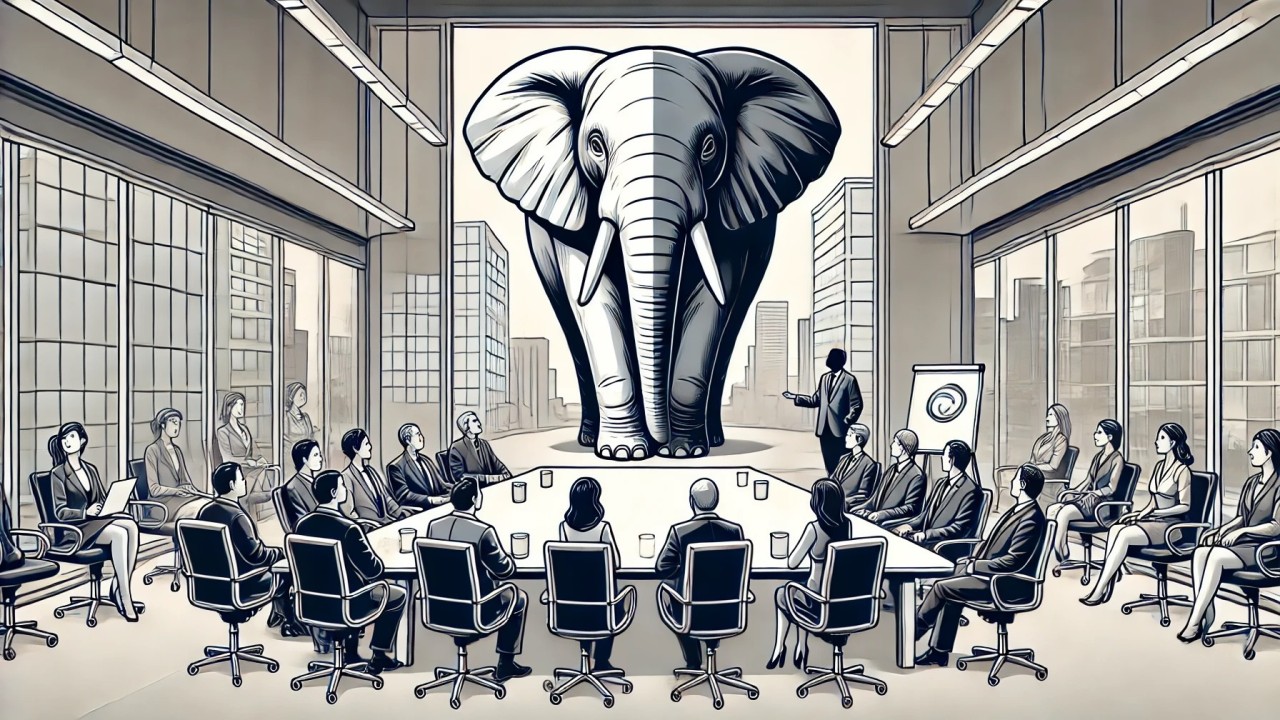What leaders need to know to build high-performing teams.
The recent shift in corporate and governmental discourse has many questioning the future of workplace diversity efforts. Some argue that DEI is dead and that a pure meritocracy—where only the “best and brightest” secure opportunities—should take its place. But that raises an important question:
What does a true meritocracy look like?
A meritocracy, by definition, rewards skill, performance, and potential—free from bias. But history shows that bias is often an invisible barrier, distorting who gets opportunities and who doesn’t. To understand this, let’s look at the OG case for meritocracy: the transformation of elite orchestras through blind auditions.
The Lesson from Blind Auditions
In the 1970s, women made up only 10% of elite orchestras. It wasn’t because the women lacked skill; rather, they suspected hiring decisions were influenced by unconscious bias. Then came a simple, powerful change: blind auditions. By placing a screen between candidates and the selection panel, orchestras evaluated musicians solely on the merit of their performance.
The results were undeniable. By the 1990s, the percentage of women in elite orchestras had jumped to over 35%. Removing visual bias unlocked merit-based hiring, proving that talent had been overlooked due to ingrained assumptions.
However, the story continues. Eliminating bias at the hiring stage wasn’t enough. Enter Abbie Conant, trombonist.
When Bias Returns After Hiring: The Case of Abbie Conant
In 1980, Conant won the role of Principal Trombonist of the Munich Philharmonic Orchestra in a blind audition. She was the overwhelming first choice—until the panel discovered she was a woman. Shocked, the orchestra’s music director demoted her to second trombone, stating:
“We need a man for solo trombone.”

Despite being hired on merit, Conant had to fight a legal battle of discrimination for 13 years (!!) to reclaim her role. She was subjected to absurd “fitness tests” to prove she had the physical strength, endurance, and durability for the role, and was even paid less than her male peers, all because the leaders couldn’t reconcile their biases with the meritocratic hiring outcome. Eventually, the courts awarded her the role and all the backpay she deserved.
Her case proved a crucial truth:
✅ Bias in hiring is only the first barrier.
✅ The points of merit must be determined upfront and not changedwhen the outcomes are unexpected.
✅ Meritocracy support must endure post-hiring, with internal and external recourses available if needed.
Now let’s turn to the gender-neutral, colorblind elephant in every boardroom.
In today’s workplaces, companies must decide what “meritocracy” truly meansin an era where employees demand fairness, trust, and opportunity.
We propose a new set of commitments:
How to Build a True Meritocracy in the Workplace
If companies want to attract and retain the best and brightest talent, they must go beyond good intentions and focus on actionable commitments. A true meritocracy isn’t about ignoring diversity—it’s about ensuring that bias does not interfere with hiring, promotions, or leadership decisions.
Here’s how companies can achieve this:
1. Build Teams That Reflect the Real World
The strongest teams aren’t homogenous—they reflect the diverse perspectives of the customers, communities, and markets they serve.
- Research from McKinsey (2020) found that companies with diverse executive teams are 25% more likely to outperform their industry peers.
- Boston Consulting Group (BCG) found that diverse leadership teams generate 19% higher revenue from innovation.
▶️ What leaders should do:
- Ensure hiring and promotion processes remove bias so that talent from all backgrounds has an equal shot at success.
- Actively seek different perspectives—not just in hiring, but in decision-making.
2. Foster Healthy “Innovation Friction”
Any experienced leader knows that great ideas don’t come from everyone agreeing—they come from different perspectives challenging the status quo.
- Harvard Business Review study found that diverse teams are 45% more likely to capture new markets (and let’s not forget the proven impact of neurodiversity on innovation and creativity, well documented in this Deloitte summary).
- The most innovative companies encourage dissent, debate, and creative tension—it prevents groupthink and sparks real progress.
▶️ What leaders should do:
- Cultivate an environment where it’s safe to challenge ideas without fear of retribution.
- Reward employees for speaking up—not just for confirming existing beliefs.
3. Ensure Employees Feel Safe to Speak and Lead
Bringing in the best talent means nothing if those individuals don’t feel valued or heard.
▶️ What leaders should do:
- Create a culture where everyone’s ideas are heard—not just the loudest voices in the room.
- Implement clear, fair promotion criteria so employees don’t feel sidelined based on unspoken biases.
When employees feel included, engaged, and empowered, they perform better, and so does the business.
The Ultimate Measure of Success: The Bottom Line
We are capitalists at heart, and we believe in the bottom line: the best teams win. And the best teams are those that tap into the full range of available talent.
The data is clear:
- Companies with gender-diverse leadership outperform financially by 25% (McKinsey, 2020)
- Diverse teams drive 19% more revenue from innovation (BCG, 2018)
- Inclusive organizations are 75% more likely to see ideas become productized, 87% more likely to say they make better decisions, and likelier to recognize higher revenues derived from innovation.(Korn Ferry, 2020).
This isn’t about “checking a box” (and it never has been)—it’s about building stronger, more profitable organizations.
A Call to Action for Leaders
If you’re a leader, ask yourself:
- Does my team reflect the customers we serve?
- Are the best ideas surfacing, or are they getting lost?
- Do employees feel they can lead, contribute, and challenge ideas without fear?
A true meritocracy isn’t about eliminating DEI—it’s about ensuring that bias doesn’t block the best talent from succeeding.
That is how companies win. That is how businesses thrive. And that is how we create merit-based workplaces that actually reward excellence.


